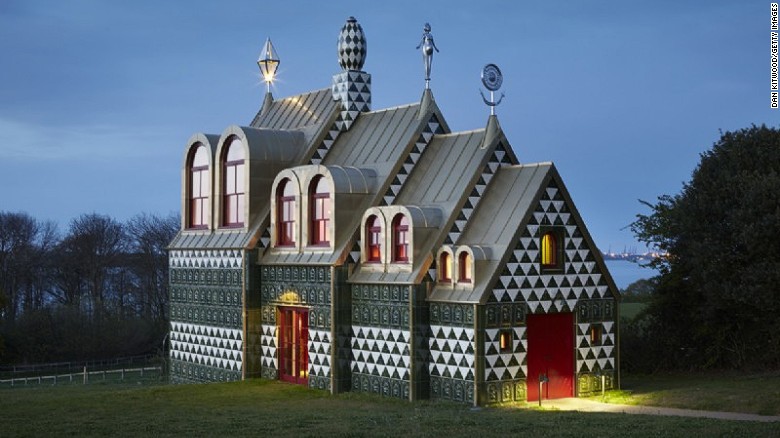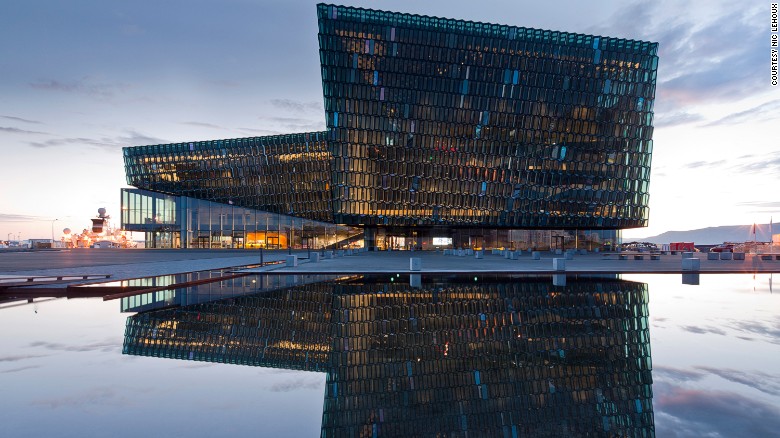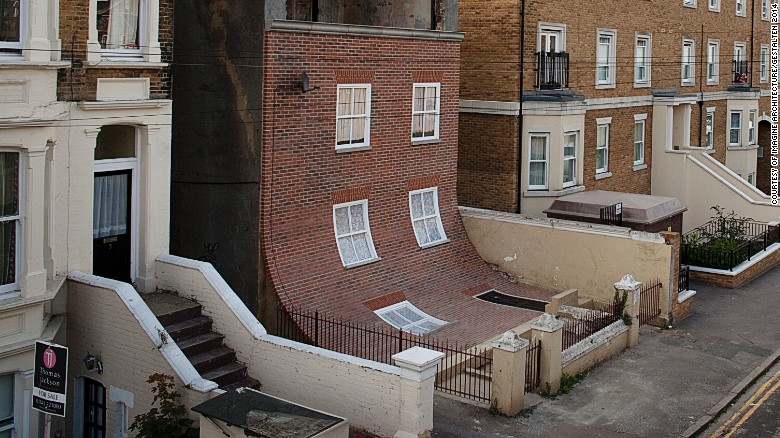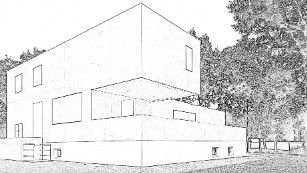Palaces of inspiration: How architecture feeds the imagination of art.

Architect Daniel Libeskind is CNN Style’s first guest editor and has commissioned a series of features exploring the theme of “Architecture and Emotion,” that will be published throughout July. In this, his first commission, Daniel asked us to look at the common thread between architecture and the expressive arts.
(CNN)“Some, if not most of my moving aesthetic experiences have been in buildings,” claims the Turner Prize-winning British artist Grayson Perry, who believes these interactions with architecture played a key role in helping to define his creative direction.
In this regard, Perry is similar to many artists who draw inspiration from the built environment. So, what sorts of ideas do artists like to borrow from architecture, and how do concepts applied to buildings translate into fine art, music or sculpture?
Perry, who is best known for his decorative ceramics, feels that religious architecture in particular has profoundly influenced both his own work, and that of generations of artists before him. “For me the very template of how we look at art was laid down in such buildings,” he explains. “We make pilgrimages to special places and admire the special objects loaded with significance and emotion [within them].”
Sacred spaces
There is certainly evidence that the construction of religious buildings over the centuries helped artistic movements develop, both because of the money lavished on their construction and decoration, and the resulting visual spectacle they provided. The Gothic, Renaissance and Baroque buildings of Prague, for instance, are known to have inspired the elaborate compositions of Mozart and Beethoven, who both visited the city in the late eighteenth and early nineteenth centuries.

The work of contemporary American composer Neil Rolnick, who is renowned as a pioneer of the use of computers in music, illustrates how musicians today also find inspiration in the work of great architects. Rolnick’s 2012 concerto Gardening at Gropius House draws on his encounters with the modernist architect and founder of the Bauhaus art school, Walter Gropius, for whom he worked as a gardener in the mid-1960s.
Describing how he translated the principles of modernism into a composition that layers melodies and rhythms produced by acoustic instruments and electronic equipment, Rolnick states: “Musically, this style meant the inclination to hear all sound as music, the inclusion of chaos and clangor, and the imposition of various kinds of abstract structural ideas on musical materials.”
He adds that the fundamental similarity between architecture and music is that “both depend on an underlying structure which is often invisible to the user or audience.” Despite the disparity between the tangibility of architecture and the ephemerality of music, Rolnick believes the integrity of this underlying structure is what determines whether either will appeal to the user or listener.
Sound and structure
For artist, Olafur Eliasson, it is in ideas pertaining to space rather than structure that he finds parallels between his work and architecture. “What interests me in general is the production of space — be it in an exhibition, an art installation, on a stamp, inside someone’s head, or in a building or bridge,” says the artist, known for creating experiential artworks that engage the viewer’s senses. “This is the potential I see in architecture, to create a space that is hospitable, generous, and gives the visitor a feeling of being welcome.”
In particular, he admires the late Icelandic architect Einar Thorsteinn, whose knowledge of geometrical and tensile structures formed the basis of regular collaborations between the two that began in 1996. “Einar tackled the spatial problems of the world with an individual approach that was not constrained by the pragmatic considerations of traditional architecture and rationality,” Eliasson claims.
The first artwork they developed together was a geodesic dome containing a fountain illuminated by a strobe light (By means of a sudden intuitive realisation, 1996) and Thorsteinn’s influence is evident in numerous subsequent projects, including Eliasson’s three-dimensional geometric facade for the Harpa Reykjavik Concert Hall and Conference Centre (2011).

Like other contemporary artists, including James Turrell, Anish Kapoor and Richard Serra, Eliasson’s work often sits within an architectural context, but can always be distinguished from architecture because it focuses on the experiential properties of space, light, shelter and warmth, rather than their practical applications.
“If a boundary has to be drawn between art and architecture, I believe it is physical functionality that divides the two disciplines,” claims British artist, Alex Chinneck. “As an artist, I see functionality as a cage to creative imagination, anchoring sculptural possibilities and freedom.”
Form vs function
Chinneck’s work takes the form of temporary public installations that subvert familiar elements of the built environment. Examples have included a house in London made from wax bricks that gradually melted and an illusory sculpture next to Covent Garden market which appeared to show the upper part of a building breaking free and hovering above the ground.
Although architecture provides a basis for his theatrical interventions, Chinneck endeavours to avoid the constraints imposed on architects by clients and briefs, which he feels stifle true creative potential. “I find that architects and designers are better versed in the balancing of aesthetics and function,” he adds, “whereas artists thrive with freedom, liberated from the need to address a brief.”

Despite the fundamental functions that architecture must perform, the best examples continue to inspire artists across all genres with their masterful use of space, harmony and proportion. The next time you visit an amazing building, look beyond its practical purpose and think about how it makes you feel, because truly great architecture can stimulate our emotions as much as any Picasso painting or Mozart opera.
























